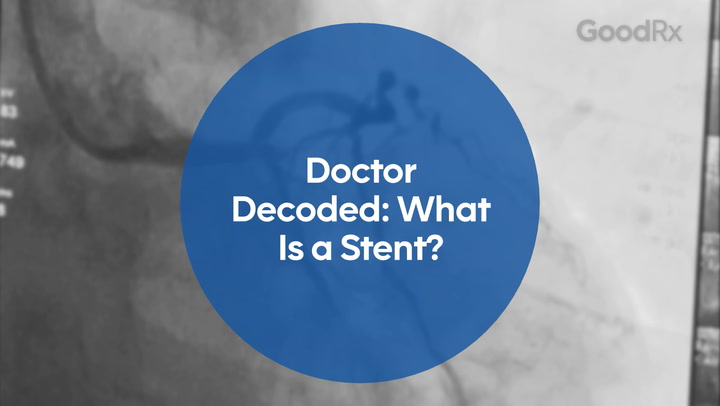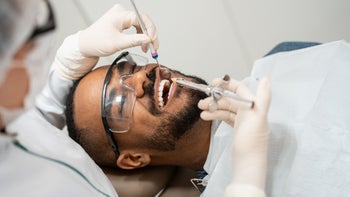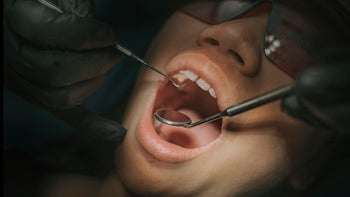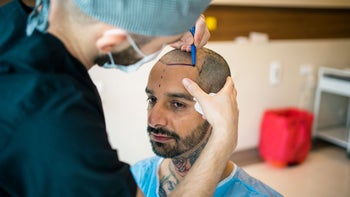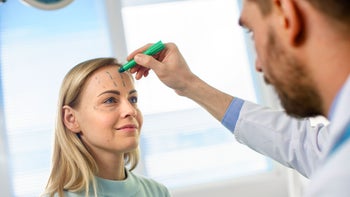
How Much Does a Cosmetic Breast Lift Cost?
Key takeaways:
Costs of a breast lift include payments for the surgeon, anesthesia, facility fees, medical tests, prescription medications, and more. Where you live also affects the total cost.
In 2021, the average surgeon's fee for a breast lift was $4,864.
Health insurance plans don’t cover the cost of a breast lift done for cosmetic reasons, but they often do if it’s part of post-mastectomy breast reconstruction.

Pregnancy, breastfeeding, weight loss, and the natural aging process can lead to sagging or droopy breasts. To reshape them, some women choose to undergo a breast lift ― a type of “boob job” officially known as mastopexy. The surgeon tightens breast tissue, removes excess skin, and moves the areola and nipple, leaving the patient with perkier, firmer breasts.
Health insurance rarely covers this surgery, because insurers see it as a cosmetic procedure. For cosmetic surgery, patients typically pay 100% of the cost out of pocket.
However, a cosmetic breast lift is different from breast reconstruction that’s done in connection with medical treatment. Health insurance generally does cover reconstruction after cancer-related mastectomies. For most plans, this coverage is required by federal law.
Search and compare options
Read on to learn how much a cosmetic breast lift could cost you and how various factors affect the price tag.
What happens during a cosmetic breast lift?
A breast lift can restore a rounder shape to breasts that are sagging, flat, drooping, or uneven. As part of the process, the surgeon can reposition downward-pointing nipples or low nipples that fall below the breast crease.
Your surgeon will choose a technique and incision pattern that's suitable for you. There are three typical incision patterns:
Around the areolas only
Around the areola and vertically from areola to breast crease
Around the areola, vertically to the breast crease, and then along the breast crease
In choosing the best approach, the surgeon will consider:
The size and shape of your breasts and areolas
The quality and elasticity of your skin
The amount of sagging tissue and excess skin you have
On the day of surgery, you'll receive either intravenous sedation or general anesthesia. The surgeon will make the incisions, lift and reshape the breast tissue, and reposition the nipple and areola, as needed. To reduce the size of the areolas, the surgeon can trim skin from the perimeter and remove excess breast skin. The surgeon secures the internal breast tissue in place and then sutures the incisions closed in a way that minimizes scarring.
Read more like this
Explore these related articles, suggested for readers like you.
A breast lift uses only existing breast tissue — not breast implants. However, some women choose to combine a breast lift with an augmentation or a reduction.
How much does a cosmetic breast lift typically cost?
The average surgeon's fee for mastopexy was $4,864 as of 2021. But your surgeon’s actual fee could be a lot more or less, depending on factors like:
The surgeon's years of experience
The specific techniques the surgeon uses
Market pricing in your local area
That said, the cost of a breast lift goes well beyond the surgeon's fee.
What other breast lift costs do I need to pay?
You’ll also face some or all of the following costs:
Consultation fees
Anesthesia fees
Hospital or surgical facility costs
Medical tests
Post-surgery garments
Prescription medications
Follow-up care
As an example, a self-pay patient in Chicago would typically pay $5,112 for a breast lift, according to the cost estimator Fair Health Consumer. The organization’s site puts the cost of anesthesia at $3,575 and the facility cost at more than $13,000 — $13,137 at an ambulatory surgical center or $13,885 at a hospital outpatient facility. With just these elements, the surgery would cost roughly $22,000.
The American Board of Cosmetic Surgery estimates the cost to be much lower. A 2018 survey found their specialists’ average price of a breast lift in Chicago could end up around $8,500. That estimated price would include all patient costs, not just surgeon fees.
Regardless, medical tests, prescriptions, and compression garments aren’t likely to be expensive. Affordable and commonly prescribed pain medications include NSAIDs, opioid/acetaminophen combinations, and opioid/NSAID combinations.
Is a breast lift worth it?
You might choose to have a breast lift to enhance the appearance of your breasts and boost your self-esteem. Only you know how much that is worth to you, and only you know if you’ll have difficulty paying the costs out of pocket.
Meanwhile, like any surgery, a breast lift has its risks. It’s prudent to consider them before you book the appointment. Potential drawbacks include:
Anesthesia side effects
Bleeding
Breasts that are not completely symmetrical
Post-surgical breast shape that doesn’t match what you wanted
Temporary or permanent loss of sensation in the breast or nipple
Potential loss of nipple and areola
Infection or poor healing
Risk of deep vein thrombosis
Risk of cardiac or pulmonary complication
Risk of fat necrosis (death of fatty tissue)
To help you assess the pros and cons of a breast lift, it's a good idea to prepare a list of questions ahead of time. Bring it with you for your consultation with your plastic surgeon.
The American Society of Plastic Surgeons (ASPS) suggests you ask surgery-related questions such as:
Am I a good candidate for this procedure?
What results are reasonable for me?
What will be expected of me to get the best results?
Where and how will you perform my procedure?
What surgical technique is recommended for me?
How long should I expect my recovery period to be?
What kind of help will I need during my recovery?
What are the risks and complications associated with my procedure?
Do you have before-and-after photos I can look at for this procedure?
How can I expect my breasts to look over time? After pregnancy?
What are my options if I’m not satisfied with the outcome of my procedure?
You'll also want to quiz your surgeon about their experience and qualifications. The ASPS proposes these questions:
Are you certified by the American Board of Plastic Surgery?
Were you trained specifically in the field of plastic surgery?
How many years of plastic surgery training have you had?
Do you have hospital privileges to perform this procedure? If so, at which hospitals?
Is the office-based surgical facility accredited by a nationally or state-recognized accrediting agency, or is it state-licensed or Medicare-certified?
Does insurance cover breast lifts?
Private health insurance doesn't cover a breast lift when it is performed as cosmetic surgery. However, mastopexy can sometimes be considered medically necessary. For example, an insurer may cover a breast lift if documents attest the procedure is necessary so that a cancer patient can have symmetrical breasts after a mastectomy or lumpectomy.
Medicare doesn't cover cosmetic surgery, either, so you'll typically pay 100% of the cost of a breast lift. However, as with private insurance, Medicare will cover plastic surgery if it’s medically necessary. For breast cancer survivors who have had a mastectomy, the surgical implantation of breast prostheses is covered. You pay 20% of Medicare’s approved amount and any unmet portion of your Part B deductible.
Similarly, Medicaid doesn't cover cosmetic breast lift surgery but does cover medically necessary breast reconstruction surgery. In some cases, mastopexy may qualify.
If you're paying for your breast lift out of pocket, you may want to finance the surgery. Your surgeon may offer a payment plan. You could also use a medical credit card like CareCredit or a healthcare loan like Prosper. But the interest rates on these accounts can be high. From a personal finance standpoint, it’s wiser to use money from your savings account. If you can’t do that, at least shop around for a credit card or personal loan at the lowest interest rate you can get.
How long does a breast lift last?
The results of a breast lift can often last for a decade or longer, but many women do undergo breast lifts more than once.
Before your surgery, you and your plastic surgeon should discuss in detail how long your breasts are likely to stay perky after mastopexy. The answer depends on the individual and a number of factors, including:
The texture and elasticity of your skin
The size of your breasts
Your age at the time of the breast lift
Natural hormonal changes that may cause loss of breast volume over time
How consistently you wear a supportive bra after surgery
Whether you lose or gain weight
The bottom line
Health insurance doesn't cover a breast lift if it’s done for cosmetic reasons, so be ready to pay the whole amount yourself. The cost can exceed $20,000, with the surgeon's fee, anesthesia, the facility fee, and more. However, if the breast lift is part of post-mastectomy reconstruction, it must be covered by any insurer that covers mastectomy.
Why trust our experts?


References
American Board of Cosmetic Surgery. (n.d.). Cosmetic surgery pricing.
American Society of Plastic Surgeons. (n.d.). Breast lift.
American Society of Plastic Surgeons. (n.d.). How much does a breast lift cost?
American Society of Plastic Surgeons. (n.d.). Questions to ask your plastic surgeon.
Anthem, Inc. (2021). Cover guideline: Breast procedures including reconstructive surgery, implants and other breast procedures.
Boston Medical Center HealthNet Plan. (2016). Medical policy: Mastopexy.
CareSource. (2021). Medical policy statement: Ohio Medicaid.
Centers for Medicare & Medicaid Services. (n.d.). Women's Health and Cancer Rights Act (WHCRA).
Daniel, L. (2018). What's the difference between a breast reduction and a breast lift? American Society of Plastic Surgeons.
FAIR Health. (n.d.). FAIR Health Consumer.
Macom. (n.d.). Post surgery compression bras.
Medicare.gov. (n.d.). Breast prostheses.
Medicare.gov. (n.d.). Cosmetic surgery.
National Cancer Institute. (2017). Breast reconstruction after mastectomy.
North Carolina Division of Medical Assistance. (2019). Medicaid and health choice breast surgeries clinical coverage policy.
Salemy, S. (2018). Breast lift vs breast augmentation vs breast implants – What's the difference? American Society of Plastic Surgeons.
Terrasse, A. (2020). What is a breast lift and what are the benefits of this procedure? American Society of Plastic Surgeons.
The Aesthetic Society. (n.d.). Ask a surgeon - Breast lift.
The Aesthetic Society. (2021). Aesthetic plastic surgery national databank statistics 2020-2021.













